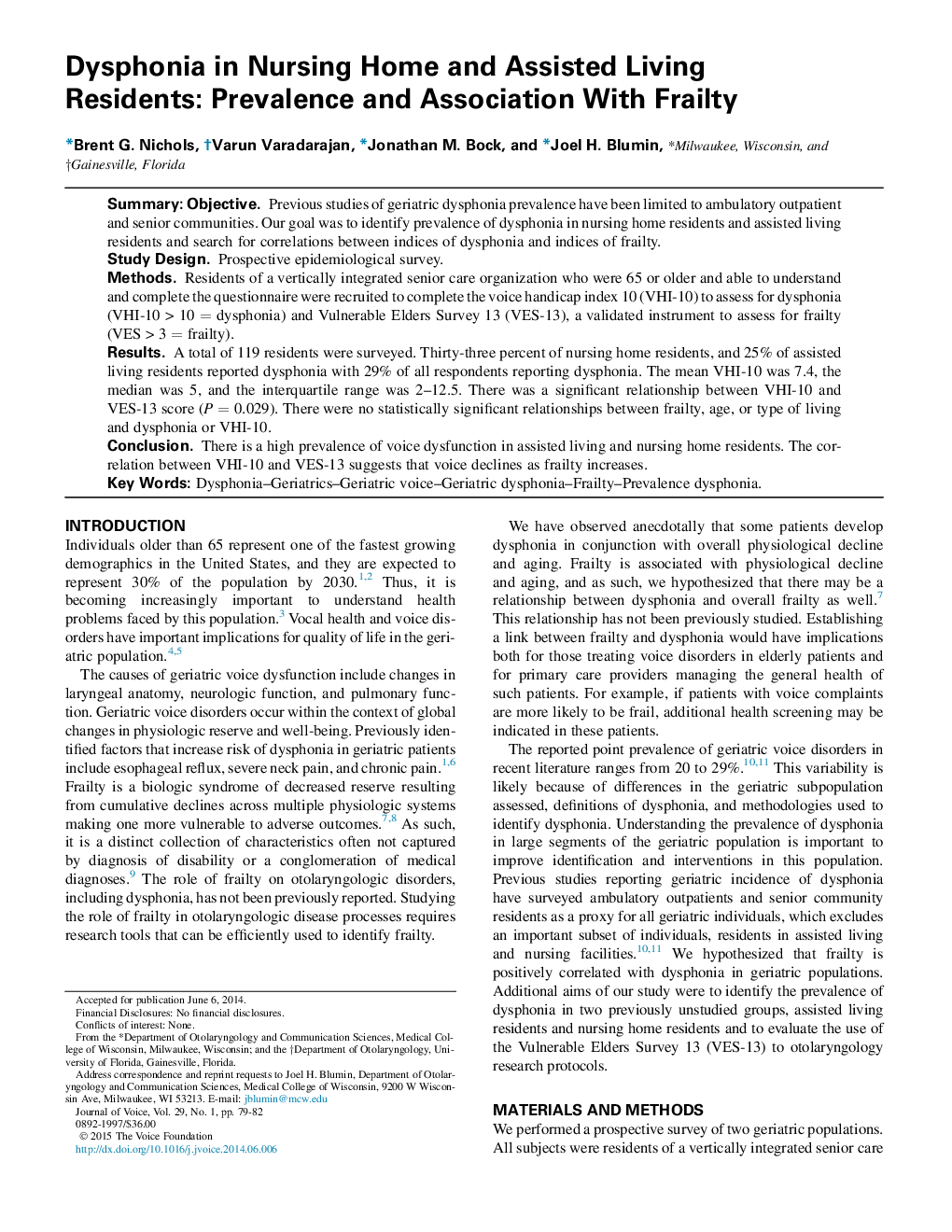| Article ID | Journal | Published Year | Pages | File Type |
|---|---|---|---|---|
| 1101508 | Journal of Voice | 2015 | 4 Pages |
SummaryObjectivePrevious studies of geriatric dysphonia prevalence have been limited to ambulatory outpatient and senior communities. Our goal was to identify prevalence of dysphonia in nursing home residents and assisted living residents and search for correlations between indices of dysphonia and indices of frailty.Study DesignProspective epidemiological survey.MethodsResidents of a vertically integrated senior care organization who were 65 or older and able to understand and complete the questionnaire were recruited to complete the voice handicap index 10 (VHI-10) to assess for dysphonia (VHI-10 > 10 = dysphonia) and Vulnerable Elders Survey 13 (VES-13), a validated instrument to assess for frailty (VES > 3 = frailty).ResultsA total of 119 residents were surveyed. Thirty-three percent of nursing home residents, and 25% of assisted living residents reported dysphonia with 29% of all respondents reporting dysphonia. The mean VHI-10 was 7.4, the median was 5, and the interquartile range was 2–12.5. There was a significant relationship between VHI-10 and VES-13 score (P = 0.029). There were no statistically significant relationships between frailty, age, or type of living and dysphonia or VHI-10.ConclusionThere is a high prevalence of voice dysfunction in assisted living and nursing home residents. The correlation between VHI-10 and VES-13 suggests that voice declines as frailty increases.
